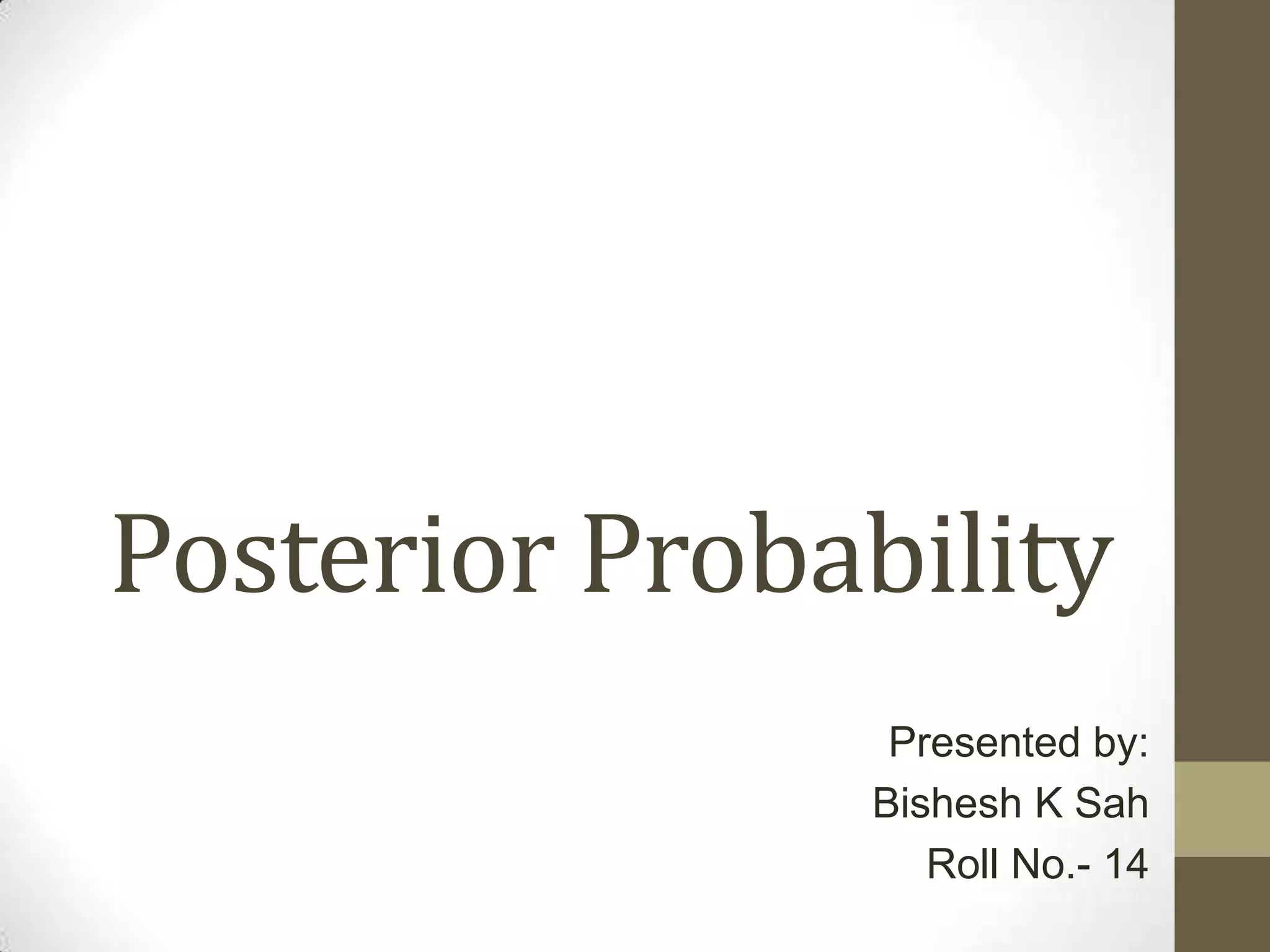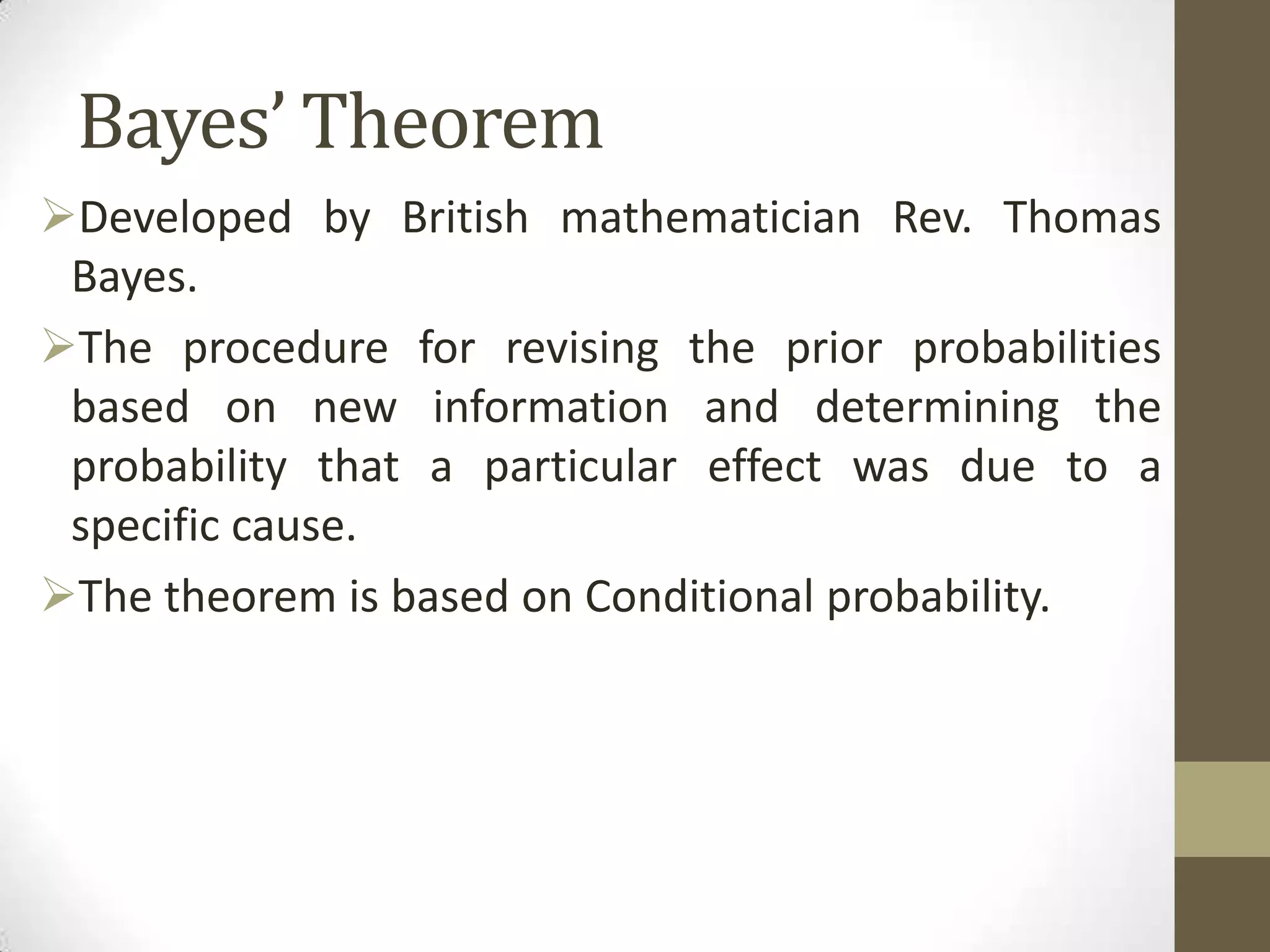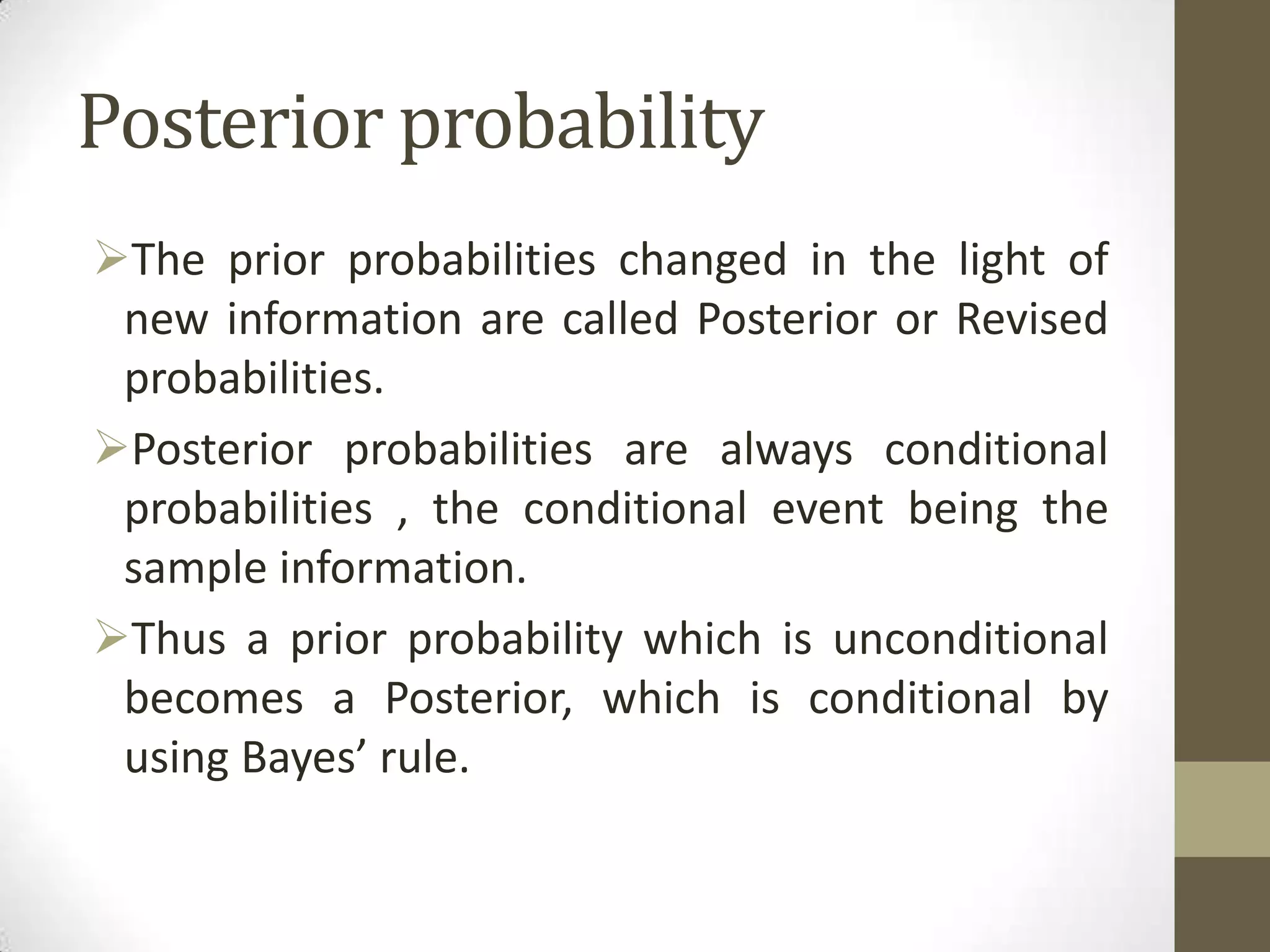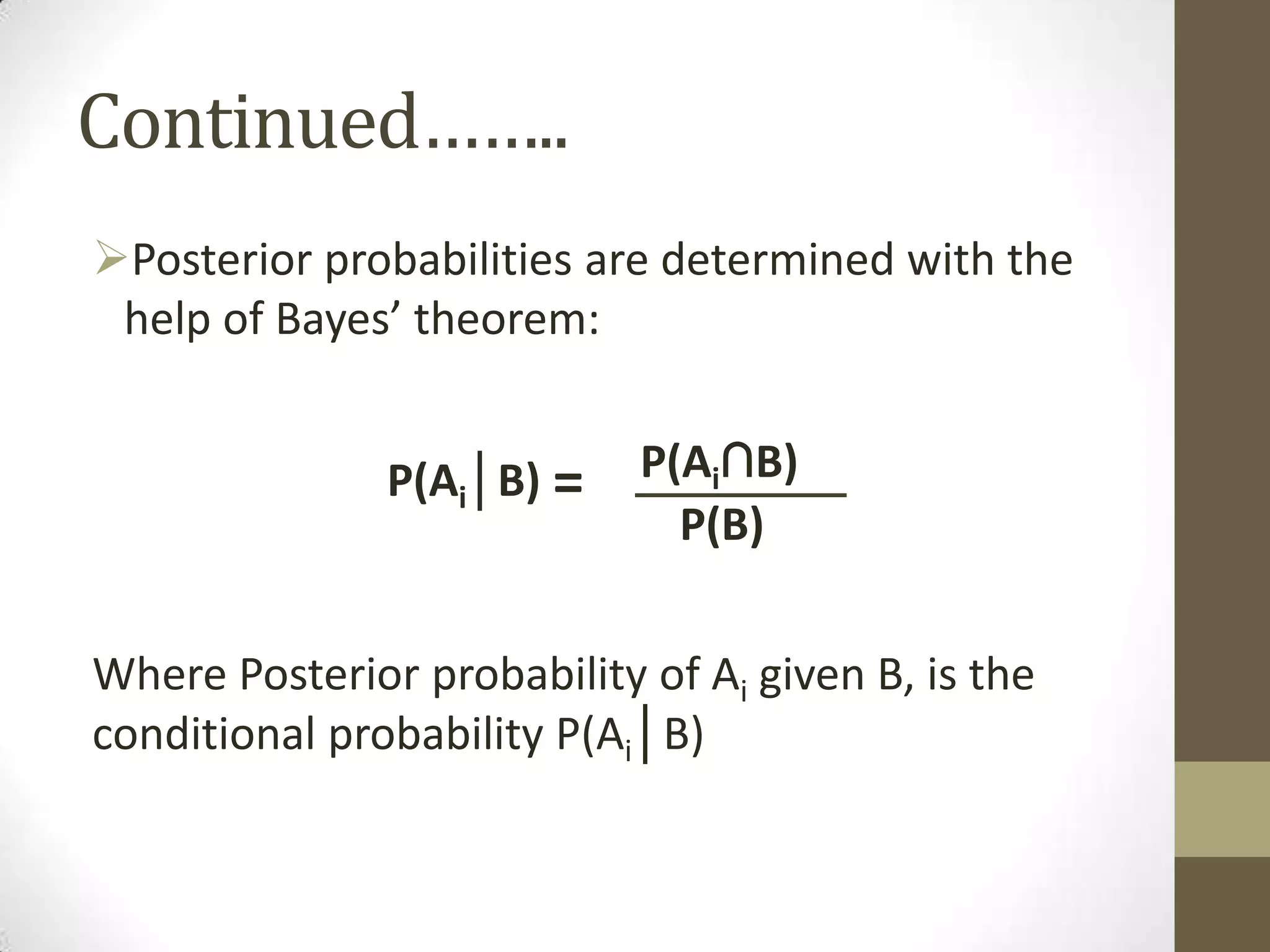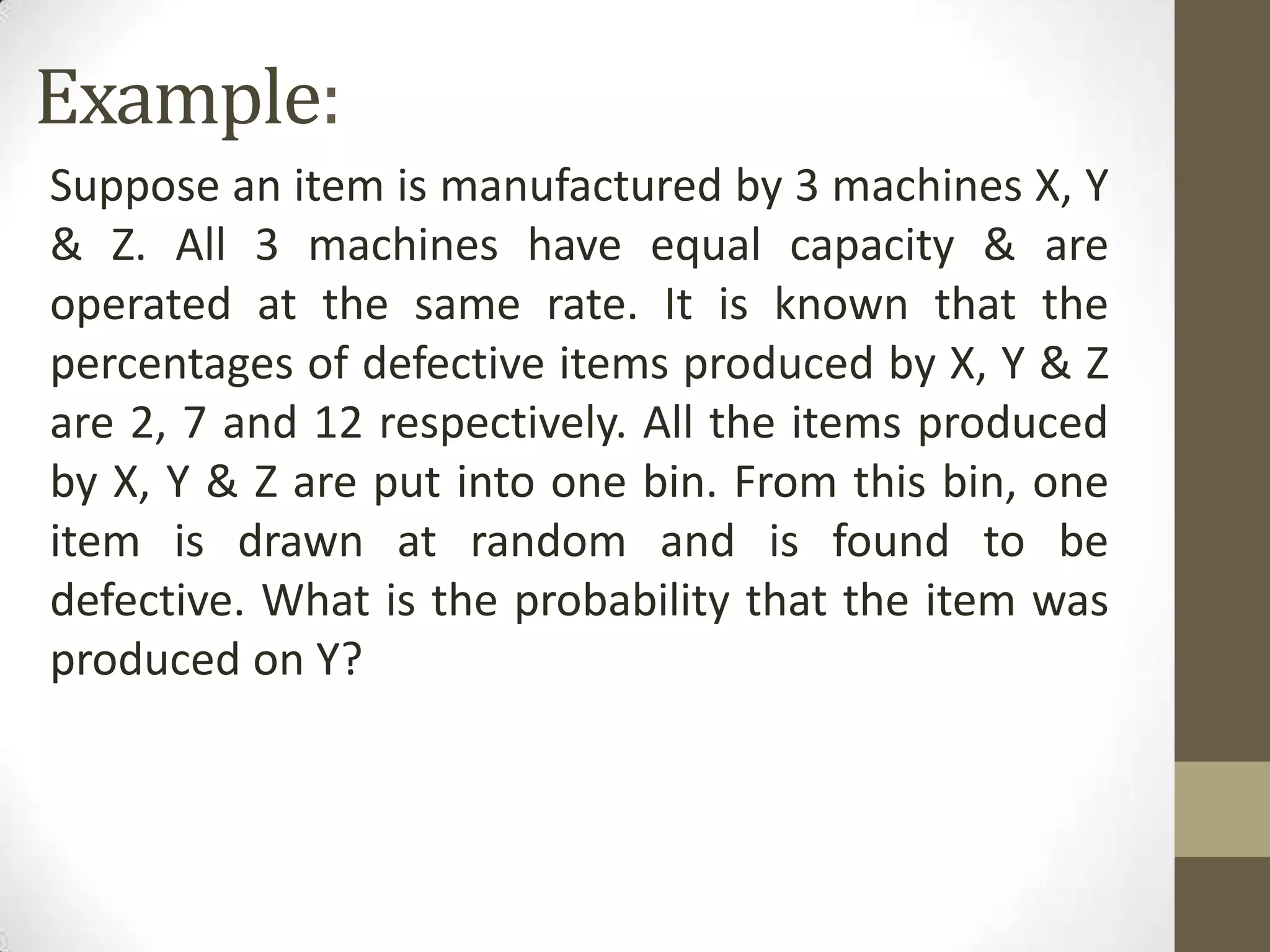Bayes' theorem provides a way to revise prior probabilities based on new evidence and determine the probability that an effect was caused by a specific cause. Posterior probabilities refer to prior probabilities that have been updated based on new information or evidence, and are conditional probabilities. Bayes' rule is used to calculate posterior probabilities from prior probabilities and new evidence using the formula: Posterior probability of A given B = (Probability of A and B) / (Probability of B). An example is provided of using Bayes' theorem to calculate the probability that a defective item was produced by machine Y given that it was drawn randomly from a bin containing items from machines X, Y, and Z.
